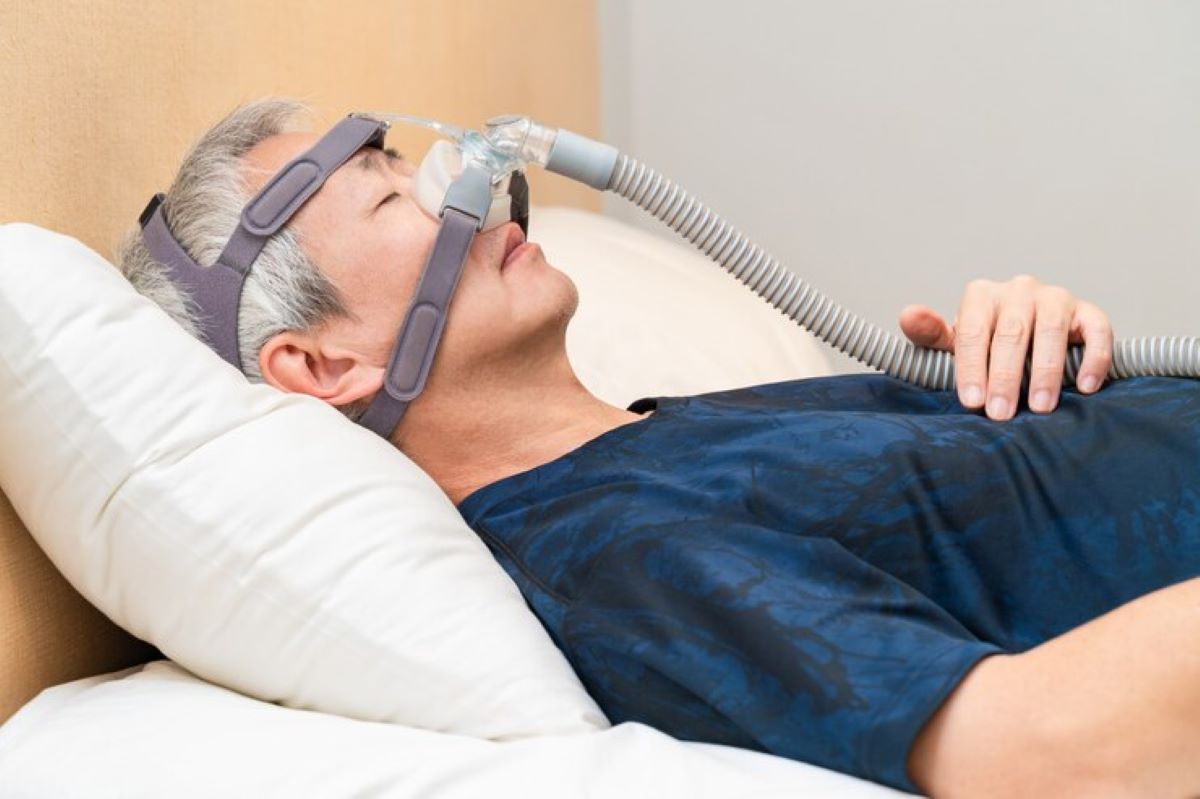Continuous Positive Airway Pressure (CPAP) machines are vital tools in treating sleep apnea. However, many users overlook a crucial component of their CPAP experience: the mask. Proper cleaning and maintenance of your CPAP mask are essential to ensure both effective treatment and personal hygiene.
Understanding the importance of CPAP mask maintenance
Maintaining your CPAP mask is not just about keeping it clean; it is about ensuring the longevity of the device and safeguarding your health. A well-cared-for mask can mean the difference between a comfortable night’s sleep and a restless one.
The role of a CPAP mask in sleep apnea treatment
The CPAP mask is the interface that delivers the essential airflow to keep your airway open during sleep. Its primary function is to provide a consistent and steady stream of air, preventing the pauses in breathing that characterise sleep apnea. A malfunctioning or dirty mask can reduce therapy effectiveness.
Risks associated with a poorly maintained CPAP mask
Neglecting to clean your CPAP mask can expose you to a myriad of health risks. Bacteria and viruses thrive in unclean environments, and your mask, if not maintained regularly, can become a breeding ground for these pathogens. This situation increases the risk of respiratory infections, sinusitis, and skin irritations.
Furthermore, a build-up of oils and moisture from your skin can lead to degradation of the mask material, resulting in a less effective seal. An improper fit can cause leaks, making your therapy less effective and leading to disrupted sleep. If you’re in need of a new mask, it’s important to buy CPAP mask that fits properly and is made from durable materials to ensure the best therapeutic results. Regular cleaning and proper maintenance will also help extend the life of your equipment.
In addition to the immediate health concerns, the psychological impact of poor sleep quality should not be overlooked. Sleep deprivation can lead to irritability, decreased cognitive function, and even long-term mood disorders. A CPAP mask that is uncomfortable or ineffective due to lack of maintenance can deter users from adhering to their prescribed therapy, ultimately exacerbating their sleep apnea symptoms. Regular maintenance not only promotes physical health but also supports mental well-being, ensuring that users can wake up refreshed and ready to face the day.
Moreover, the financial implications of neglecting CPAP mask maintenance can be significant. Frequent replacements due to wear and tear can quickly add up, placing a burden on your budget. By investing time in proper cleaning and care, you can extend the life of your equipment, making it a more economical choice in the long run. This proactive approach to maintenance not only enhances the effectiveness of your treatment but also fosters a sense of responsibility towards your health management.
Getting to know your CPAP mask
To ensure that you maintain your CPAP mask effectively, you must understand its components and functions. Knowledge about different types of CPAP masks and their specific parts will help you tailor your cleaning and maintenance tasks accordingly.
Different types of CPAP masks
CPAP masks come in various styles, and each type serves different needs. The main types include:
- Nasal Masks: Cover only the nose and are suitable for those who breathe through their nose.
- Full-Face Masks: Encompass both the nose and mouth, ideal for mouth breathers or individuals with nasal congestion.
- Nasal Pillow Masks: Have small prongs that fit directly into the nostrils, offering a minimalistic design for those who prefer less coverage.
Knowing which mask you have can affect your cleaning routine, as different materials and designs may require specific care methods. For example, while nasal masks may be made from softer silicone, full-face masks often incorporate sturdier materials to support their larger structure. Understanding these nuances can help you select the right cleaning agents and techniques, ensuring your mask remains hygienic and functional for longer periods.
Identifying parts of your CPAP mask
A typical CPAP mask consists of several parts: the cushion, headgear, frame, and the exhalation port. Familiarising yourself with these components is crucial. For instance, the cushion may require more frequent cleaning to remove acids and oils from skin contact, while the headgear should be washed to maintain elasticity and avoid skin irritation.
Each part has its own susceptibility to wear and tear. By knowing the anatomy of your mask, you can better assess when to replace or repair components, prolonging the life of your equipment. Additionally, understanding the role of the exhalation port is vital; it allows for the release of exhaled air, preventing the build-up of carbon dioxide. Regular checks on this part can help ensure it remains unobstructed, contributing to both your comfort and the effectiveness of your therapy. Moreover, some masks come with adjustable features, allowing for a more personalised fit, which can significantly enhance your overall experience and compliance with CPAP therapy.
Step-by-step guide to cleaning your CPAP mask
A consistent cleaning routine will keep your CPAP mask in excellent condition. Here’s a straightforward guide to maintaining your mask effectively.
Gathering the necessary cleaning supplies
Before starting your cleaning routine, gather the following supplies:
- Warm water
- Mild soap or CPAP-specific cleaner
- A soft cloth or sponge
- A clean towel
- A container for soaking parts, if necessary
Having all your supplies on hand will streamline the process and ensure you do not miss any vital steps in your maintenance routine. It’s also wise to check the manufacturer’s recommendations for any specific cleaning products that may enhance the longevity of your mask. Some users find that investing in a dedicated CPAP cleaning kit can be beneficial, as these often include all the necessary tools and solutions tailored for optimal care.
Daily cleaning routine for your CPAP mask
Your daily routine should include washing the mask cushion and the headgear. Start by rinsing the cushion under warm water, applying a small amount of mild soap, and using the cloth to gently scrub away any residue. Rinse thoroughly to remove all soap. The headgear can be wiped down and need not be soaked daily.
Ensure that everything is dried thoroughly before reassembling, as moisture can contribute to bacterial growth. Position your mask in a well-ventilated area to facilitate the drying process. Additionally, consider inspecting the mask for any signs of wear or damage during your daily routine, as early detection can prevent more significant issues down the line. Regularly checking the straps for elasticity and the cushion for any cracks or tears will help maintain the effectiveness of your CPAP therapy.

Weekly deep-cleaning process
In addition to your daily maintenance, a weekly deep clean is essential. This involves disassembling your mask and soaking the removable parts in warm, soapy water for around 30 minutes. After soaking, rinse thoroughly under warm water.
Pay particular attention to the exhalation port and frame, as these can accumulate dirt more quickly than other components. Once cleaned, dry all parts and reassemble only when completely dry to prevent mould growth. It’s also advisable to clean the humidifier chamber and tubing weekly, as these areas can harbour moisture and bacteria. A thorough cleaning of these components will not only enhance your comfort but also ensure that your CPAP machine operates at peak efficiency, providing you with the best possible sleep therapy experience.
See Also : The Top-Rated CPAP Masks Australia for High-Quality Sleep Therapy
Tips for maintaining your CPAP mask
Regular maintenance is key to prolonging the lifespan of your CPAP mask. Here are some key tips to keep your mask in optimal condition.
Regular replacement of CPAP mask parts
Even with diligent cleaning, components of your CPAP mask are subject to wear and tear. It is advisable to replace the mask cushion, headgear, and other parts regularly, typically every 3 to 6 months, depending on usage.
Signs that your mask parts require replacement include discolouration, cracks, or a noticeable odour. Addressing these issues promptly will maintain your mask’s effectiveness and comfort.
Proper storage of your CPAP mask
When not in use, store your CPAP mask in a clean, dry place, away from direct sunlight or heat sources. A designated storage case can protect it from dust and damage. Ensure that it is fully dry to prevent moisture build-up that could encourage bacterial growth.
By being mindful of storage and replacement, you can ensure that your CPAP mask remains an effective tool in your journey towards better sleep health.
Troubleshooting common CPAP mask problems
Despite careful maintenance, you may encounter issues with your CPAP mask. Identifying and addressing these problems early can enhance your overall experience.
Dealing with mask leaks
Mask leaks can disrupt your therapy, leading to an inadequate supply of air. Check the fit to ensure that the straps are adjusted correctly. It is also vital to inspect the mask for tears or wear, as even small damage can affect the seal.
If leaks persist, consider using a different mask style or resizing options. A proper fit is crucial; therefore, do not hesitate to consult your healthcare provider for advice on suitable alternatives.
Managing discomfort or skin irritation
Discomfort from your CPAP mask can stem from various factors, including improper fit or material sensitivity. Ensure that your mask fits snugly without being overly tight. You might also want to explore options with softer materials if you experience skin irritation.
Regular cleaning will also help reduce irritation; oils and residues can exacerbate skin issues. If discomfort continues, speak with a healthcare professional about possible adjustments or replacement options.
In summary, maintaining your CPAP mask is an essential part of effective sleep apnea treatment. By following a rigorous cleaning and maintenance routine, you can ensure a comfortable and effective therapy experience, ultimately leading to better sleep and improved health.


